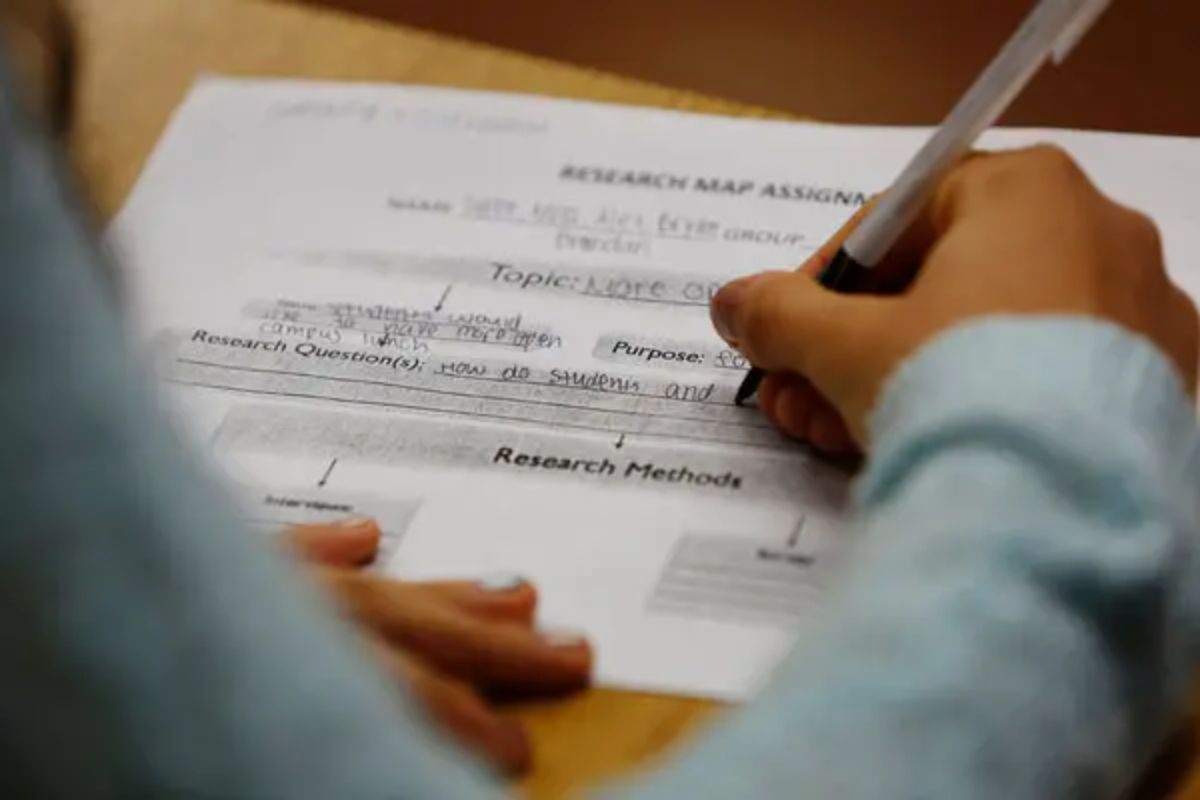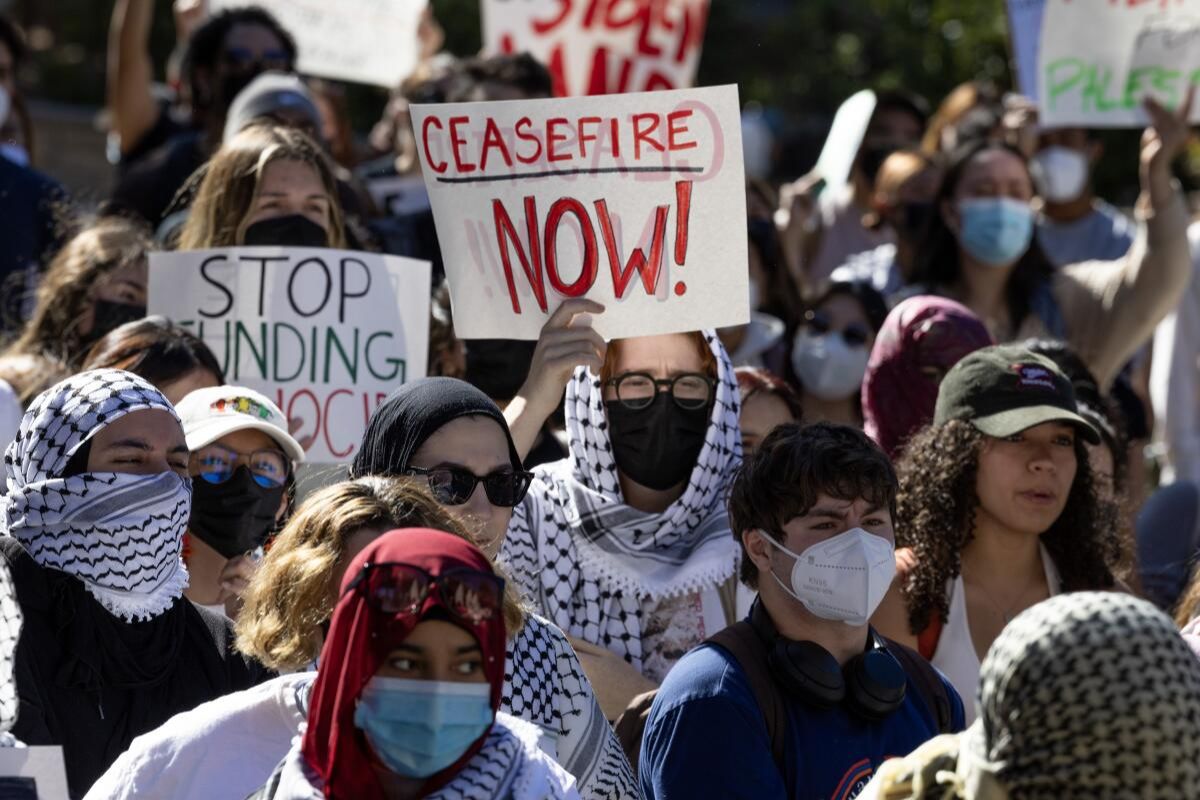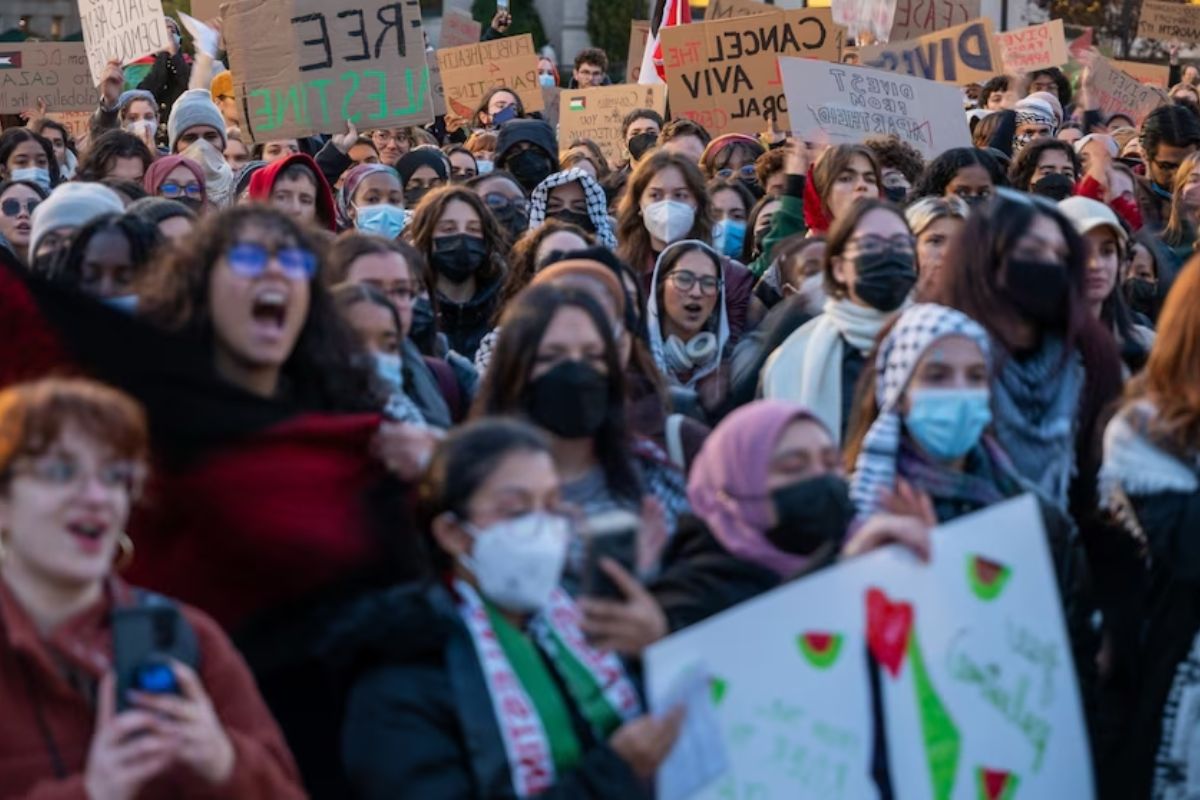California Ethnic Studies Clash: In the realm of California’s ethnic studies, the clash over Israel-Hamas tensions acts as a prism, refracting complexities and controversies onto the ambitious educational landscape. As the state grapples with implementing a groundbreaking curriculum, the intersection of international conflicts and academic discourse has sparked fiery debates and raised crucial questions. The repercussions of these clashes extend far beyond the Golden State, echoing into broader national dialogues and shaping the future of ethnic studies across the country. The interplay between politics and education unveils intricate layers waiting to be explored further.
Key Takeaways
- California’s Ethnic Studies clash involves controversies over the inclusion of Israel-Hamas war tensions.
- The clash reflects ongoing debates on adapting complex content for high school students.
- Critics argue that omitting the Israeli-Palestinian conflict hinders a comprehensive understanding.
- The clash highlights the challenge of balancing perspectives in ethnic studies curriculum discussions.
California’s Ambitious Ethnic Studies Plan
California’s ambitious plan for ethnic studies aims to have all public high schools in the state incorporate the subject into their curriculum by 2025, with a requirement for high school graduation by 2030. This initiative represents a significant step towards promoting diversity, equity, and inclusion in education. By integrating ethnic studies into the curriculum, California seeks to provide students with a more comprehensive understanding of the historical, social, and cultural experiences of various ethnic groups. This approach not only enriches the educational experience but also prepares students to thrive in a diverse and multicultural society.
The mandate for ethnic studies reflects California’s commitment to fostering a more inclusive and equitable learning environment. By exploring the contributions, struggles, and perspectives of different ethnic communities, students can develop a deeper appreciation for the complexities of American society. This initiative also aligns with broader efforts to combat prejudice, discrimination, and social injustice. Ultimately, the incorporation of ethnic studies into high school education in California represents a crucial step towards building a more informed, empathetic, and socially conscious future generation.
Controversies Surrounding Adaptation
Amid California’s push for high schools to adopt ethnic studies, a debate has emerged among scholars, parents, and educators regarding the adaptation of college-level curriculum for younger students. While the state aims to promote diversity, equity, and inclusion through ethnic studies, concerns have been raised about the appropriateness of certain content for high school students. Scholars argue that college-level materials may contain complex concepts and perspectives that could be challenging for younger learners to grasp fully.
Parents express apprehension about exposing their children to potentially controversial or divisive topics at a young age. Educators are divided on how best to modify the curriculum to suit the developmental stage of high school students while maintaining the integrity of the subject matter. This clash underscores the need for careful consideration and collaboration to ensure that the adaptation of ethnic studies for high school aligns with educational goals and ethical standards, while also fostering critical thinking and cultural understanding among students.
Model Curriculum and Criticisms
The introduction of a 700-page model curriculum in California’s push for high schools to adopt ethnic studies has garnered criticism for its activist spirit while notably omitting discussion of the Israeli-Palestinian conflict. This model curriculum reflects the discipline’s emphasis on social justice issues and historically marginalized communities, aiming to provide students with a broader understanding of diverse perspectives. However, the omission of the Israeli-Palestinian conflict has sparked controversy, with critics arguing that this exclusion undermines the comprehensive nature of ethnic studies.
By neglecting to address such a significant and contentious issue, the model curriculum may be seen as presenting a limited view of global conflicts and historical injustices. Some stakeholders have voiced concerns that this omission could impact students’ ability to engage critically with complex geopolitical issues and may hinder the development of their analytical skills in evaluating conflicting narratives. As discussions around the curriculum continue, the debate over what should be included and how to balance different perspectives remains at the forefront of the conversation.
Liberated Ethnic Studies Movement
Advocates of the ‘liberated ethnic studies’ movement are pushing for a curriculum that aligns more closely with college-level teachings, sparking controversy due to its political implications. This movement, supported by prominent scholars and educators, aims to deepen the understanding of ethnic studies by incorporating more advanced and nuanced perspectives typically found in higher education. By advocating for a curriculum that goes beyond surface-level discussions, proponents of this movement seek to provide students with a more comprehensive and critical analysis of historical events, social structures, and systems of power.
The call for a liberated ethnic studies curriculum challenges traditional approaches by urging educators to address complex issues such as systemic racism, colonialism, and social justice. While some view this as a necessary step towards academic rigor and inclusivity, others criticize it for potentially introducing biased or divisive content into the classroom. As the debate continues, it raises important questions about the role of education in shaping students’ understanding of society and history.
Nationwide Impact and Ongoing Debate
The clash over divergent approaches to ethnic studies curriculum in California schools has sparked intense debate and legal challenges, resonating beyond state borders to influence the future landscape of K-12 education in the United States. This clash has not only highlighted the importance of ethnic studies but has also brought to the forefront the complexities of designing a curriculum that reflects diverse perspectives while navigating contentious issues. As various stakeholders weigh in on how best to approach ethnic studies, the implications of these debates extend far beyond California, shaping the national dialogue on education and cultural representation.
The ongoing controversy underscores the need for thoughtful consideration and inclusive dialogue to address the complexities of ethnic studies in a way that promotes understanding and unity rather than division. As the nation grapples with how to incorporate diverse perspectives into educational frameworks, the outcome of this debate in California has the potential to set a precedent for how other states approach ethnic studies in the future, making it a pivotal moment in the evolution of K-12 education nationwide.
Also Read: High-Speed Drama Domestic Violence Chase Across SoCal
Conclusion Of California Ethnic Studies Clash
The clash over California’s ethnic studies curriculum reflects deeper tensions surrounding Israel and Hamas. The controversies surrounding the model curriculum highlight the importance of addressing diverse perspectives and histories in education. The nationwide impact of this debate underscores the need for thoughtful and inclusive discussions on ethnic studies to promote understanding and unity among different communities. The ongoing dialogue on this issue will continue to shape the future of education and cultural awareness in America.
Our Reader’s Queries
What caused the conflict between Israel and Hamas?
Analysts assert that Hamas launched the attack due to Palestinian frustration with ongoing Gaza blockade, increasing settler violence in the West Bank, and dissatisfaction with Arab-Israeli normalization efforts.
How many Palestinians have been killed by Israel?
Approximately 30,000 Palestinians lost their lives in the 82-day conflict in Gaza, characterized as an Israeli military campaign [EN/AR] – in the occupied Palestinian territory | ReliefWeb.
Who started the war between Israel and Hamas?
The conflict initiated with a Hamas incursion into Israel on Oct. 7, resulting in the death of approximately 1,200 individuals, predominantly civilians, and the abduction of around 250.




